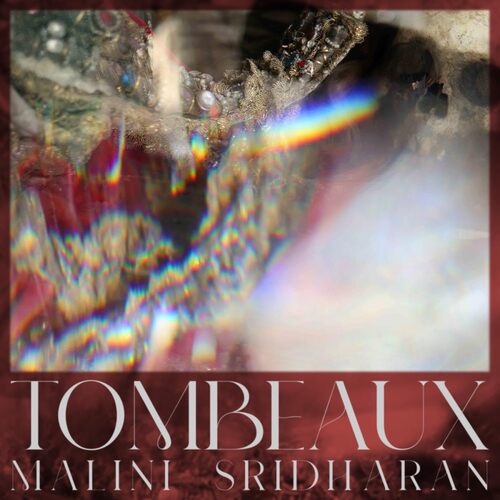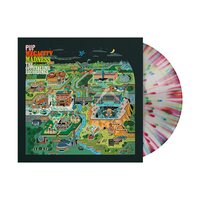The seven songs of Tombeaux comprise the Brooklyn-based composer and multi-instrumentalist’s third full-length recording, and her first written and arranged for a large ensemble. Frustrated by the limitations of self-production and solitary home recording, Sridharan set out to create something sonically broader, featuring sitar, vibraphone, woodwinds, horns, strings, and piano. Tombeaux is richly textured and deeply felt, weaving medieval and classical influences into a distinct art pop tapestry that will be much loved by fans of Laurie Anderson, Bel Canto, Anna von Hausswolf, and Julia Holter, who produced the record. The record’s subject is as expansive as the ensemble; each song is a discrete tale of a death, imagined by Sridharan and told in the first person. From reimagining the work of 16th-century Indian poet Mirabai to exploring Ursula K. Le Guin’s Earthsea afterworld, The Dry Land, to writing about her own grandmother’s death, Sridharan teases out the varied nature of death, applying a broad range of historical and cultural lenses to this great inevitability. Sridharan was raised by an Indian father who exposed her to Indian classical music and a mother whose passion for history, archeology, and medieval music informed and inspired her from an early age. Her upbringing in the woods of Michigan and high school years on the shores Lake Michigan perhaps further inspired her tendency toward reverie, imagined narratives, and the drama that unfolds between this shore and the next. Though not intended as an exhaustive survey of ideas of death across cultures, Tombeaux’s scope is impressive, shot through with the feel of a book of short stories, or a performance of tales. It is enchanting and elegantly executed, sensitively shepherded by Holter’s production.
Release date:
June 14, 2024
Label:
Install our app to receive notifications when new upcoming releases are added.

Recommended equipment and accessories
-

Pro-Ject Phono Box DC Pre-Amp
Compact, high-performance phono preamplifier for both MM and MC cartridges, delivering a clean, detailed signal with minimal noise.
-

Pro-Ject Debut Carbon EVO
Featuring a one-piece carbon fiber tonearm, precision-tuned motor, and a heavy steel platter with TPE damping, it ensures superior stability and sound quality.
-

Vinyl Care - Top Picks
A selection of accesories to keep your turntable equipment & vinyl records in the best shape
-

Ortofon 2M Blue Premounted
Mounted on the SH-4 Black Headshell, this setup delivers exceptional clarity, dynamic range, and accurate sound reproduction.
-

HumminGuru: Ultrasonic Vinyl Record Cleaner
Advanced ultrasonic technology with customizable cleaning cycles and a large tank capacity to thoroughly remove dust, dirt, and contaminants
Featured Upcoming Vinyl
-

Yes SYmphonic Live (Limited Edition; Half-Speed) [4xLP]
Mercury Studios
January 23, 2026 -

Howard Jones Live At The Marquee (Translucent Yellow) [2xLP]
Cherry Red
January 30, 2026 -

Tori Amos Strange Little Girls Real Men Version [2xLP]
Atlantic Catalog Group
February 20, 2026 -

Miguel All I Want Is You
Legacy Recordings
February 6, 2026 -

Powerwolf Wildlive Live at Olympiahalle [2xLP]
Napalm Records
March 6, 2026 -

Annabelle Chairlegs Waking Up
TODO
January 30, 2026 -

Edenbridge Set the Dark on Fire [2xLP]
Steamhammer
January 16, 2026 -

Sananda Maitreya Juvenilia: The Columbia Years [6xLP]
Music On Vinyl
February 6, 2026 -

Hilary Duff luck... or something
Atlantic
February 20, 2026 -

The Paper Kites If You Go There, I Hope You Find It (Rust)
Nettwerk Records
January 23, 2026 -

Yonaka Until You're Satisfied
Distiller Records LLP
March 13, 2026 -

Puscifer Normal Isn't [2xLP]
Bmg
February 6, 2026 -

PUP Megacity Madness The Official Live Recordings (Multicolor Splatter)
Rise Records
March 13, 2026 -

Sammy Brue The Journals (Turquoise)
Bloodshot
January 23, 2026


















